Beech nuts: crunchy snack from the local forest - How to gather and process
The fruits of the beech tree, beech nuts, are edible for us humans. Learn here how to collect them and what to cook with them. [including beech nut recipes]
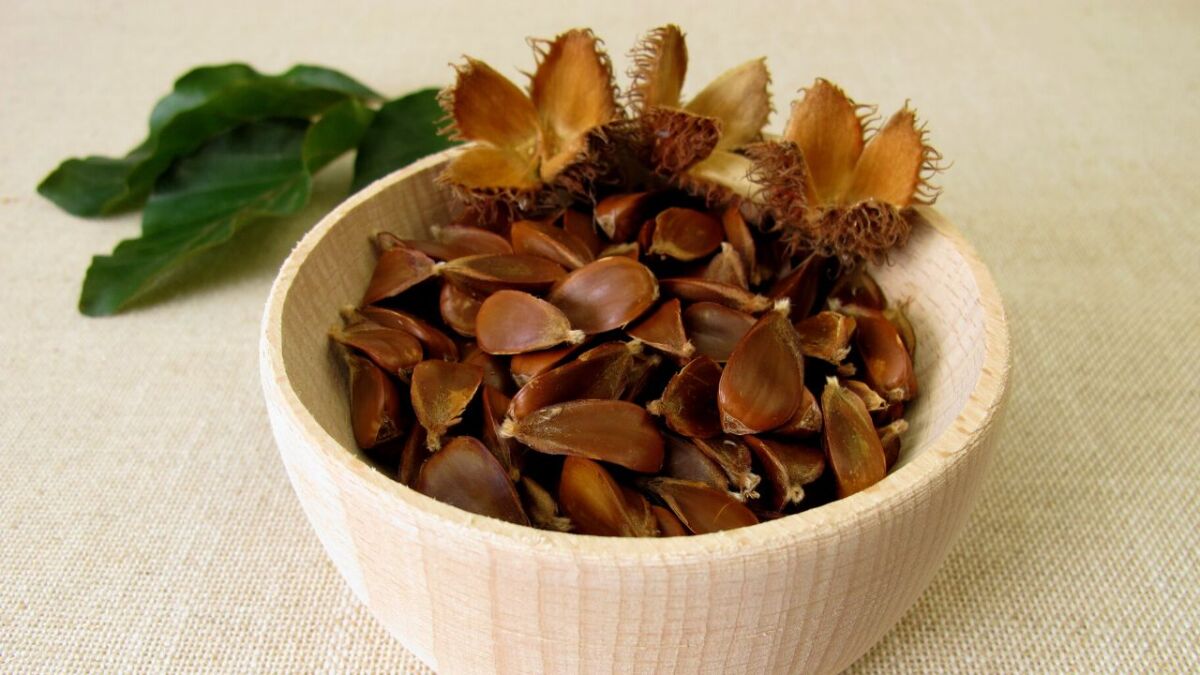

From Martin Gebhardt. Check out my “About me” page.
👉 The key facts from this guide
- The collection time for beechnuts begins in mid-September. Make sure that the bark on the tree is smooth, and the nuts are intact.
- Beechnuts are mildly toxic when raw and can cause stomach and headaches, even vomiting or cramps. Heating can break down all toxins.
- Beechnuts are rich in trace elements such as copper, manganese, iron, and zinc, as well as numerous vitamins and minerals. They contribute to a balanced diet with healthy fats.
- The beechnuts can be roasted or dried and processed into flour. The flour can be added to your regular wheat or rye flour to increase the content of healthy ingredients.
- Beechnuts can be used in various recipes, such as pesto, bread, cake, or muesli. They can also serve as a coffee substitute or be processed into beechnut butter.
- Although beechnuts are digestible for wild animals, they can have fatal effects on pets. Horses or guinea pigs cannot tolerate the fruits of the common beech at all, and caution should also be taken with rabbits.
In September, when temperatures settle to bearable degrees, taking long walks in the fresh air or hiking in the woods becomes enjoyable again.
The good thing is that harvest time has begun, and this applies not only to fields and gardens, but of course also to all the treasures that Mother Nature has to offer.
At no time of the year is the table so richly filled with small delicacies as in the months of September and October.
Rose hips, apples, pears, nuts, late blackberries, and mushrooms are abundant now. You basically just have to reach out and take them.
But another time we'll discuss all the good things you can make with them because today, I want to introduce you to another unfortunately forgotten fruit.
The focus is on the beech, or more precisely on the beech nut.
I would like to show you where you can find beech nuts, how to process them, and what you can make from them.
I'm sure I can surprise you, and you'll learn things you didn't know before.
Beech Nut Harvesting Time
From mid-September, depending on the region and location, the beech nut's ripening season begins.
This refers to the fruit of the European beech. Other beeches also have nuts, but upon closer inspection, they are unsuitable, as is the case with the hornbeam, with its tiny winged nuts.
The bark of the European beech is silvery and smooth. The leaves turn from green to yellow in autumn and finally into a beautiful rust red.
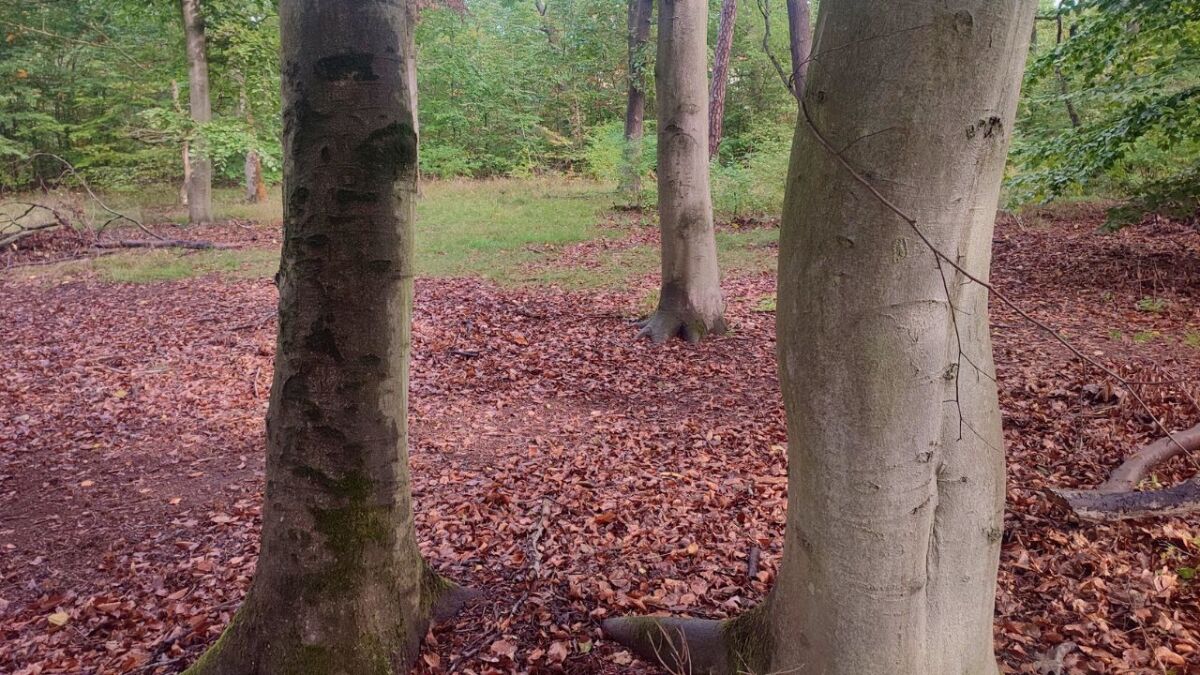
And finally, there are the fruits, which are covered with a spiky outer skin that protects the nuts inside.
Similar to the chestnut, this inner part has chambers. Inside are always a few nuts, separated by a thin membrane.
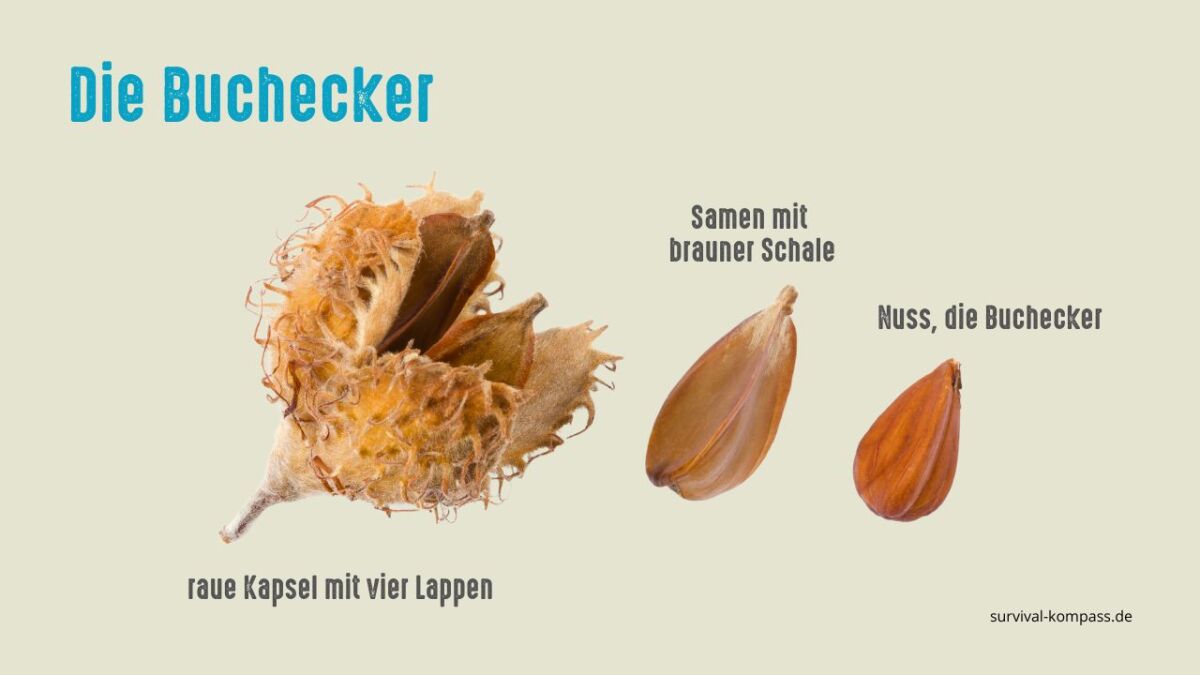
As long as the shell outside is still green, the beech nuts are not yet ripe. However, the plant helps you determine the right time.
When the time comes, the tip of the fruit opens. With some practice, you can easily recognize how many days are left until you can harvest.
Now you just have to check if the bark on the tree is nice and smooth. Usually, the European beech does not form cracks in the bark.
However, if it is covered with many gaping cracks, the European beech has a problem called beech scale infestation or bark splitting disease.
In both cases, the beech produces fruit capsules, but the fruits inside have collapsed, withered, or are not included at all.
Insects aren't picky eaters, either.
Next, you should check if the triangular nuts are intact.
If there are holes in the nut, the beetles were faster than you.
Once you have collected enough beech nuts and brought them home safely, it's time to process them.
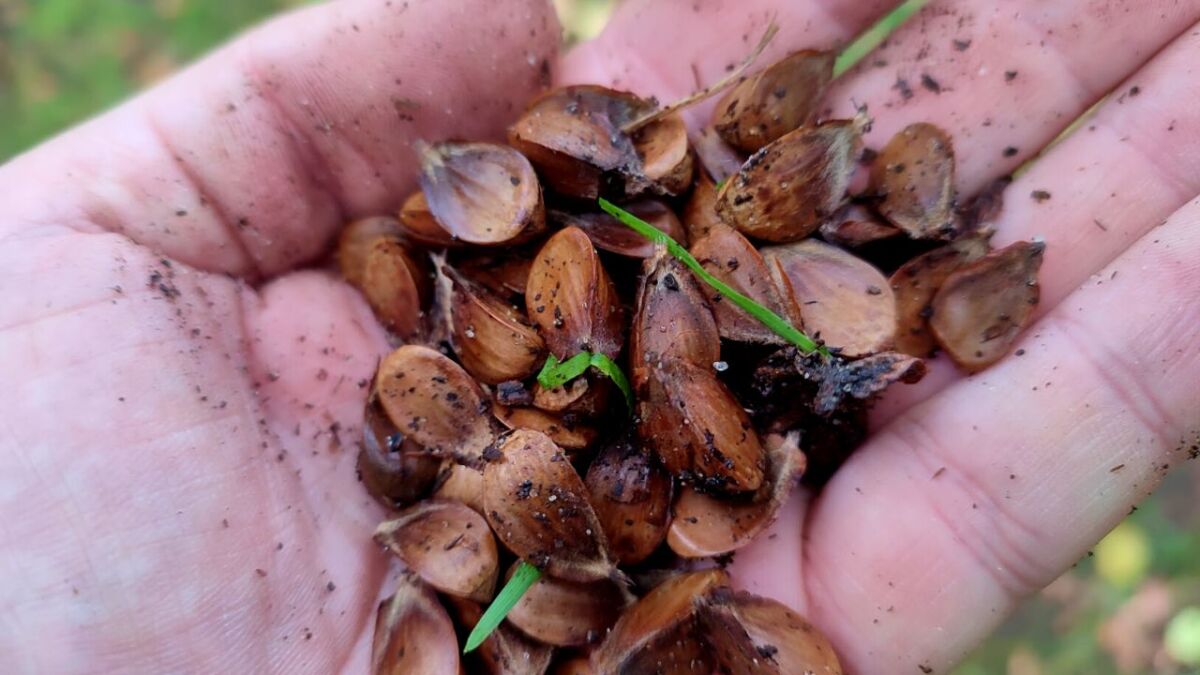
You have different processing options, which I will explain in more detail shortly.
You will also learn more about making durable flour from beech nuts and how to store it later on.
How to process beech nuts
Firstly, you should check the beech nuts again.
As nobody bothers to remove the beech nuts from their husks at the collection point, this will now be your most important step.
If my beech nuts are dirty, I wash them first.
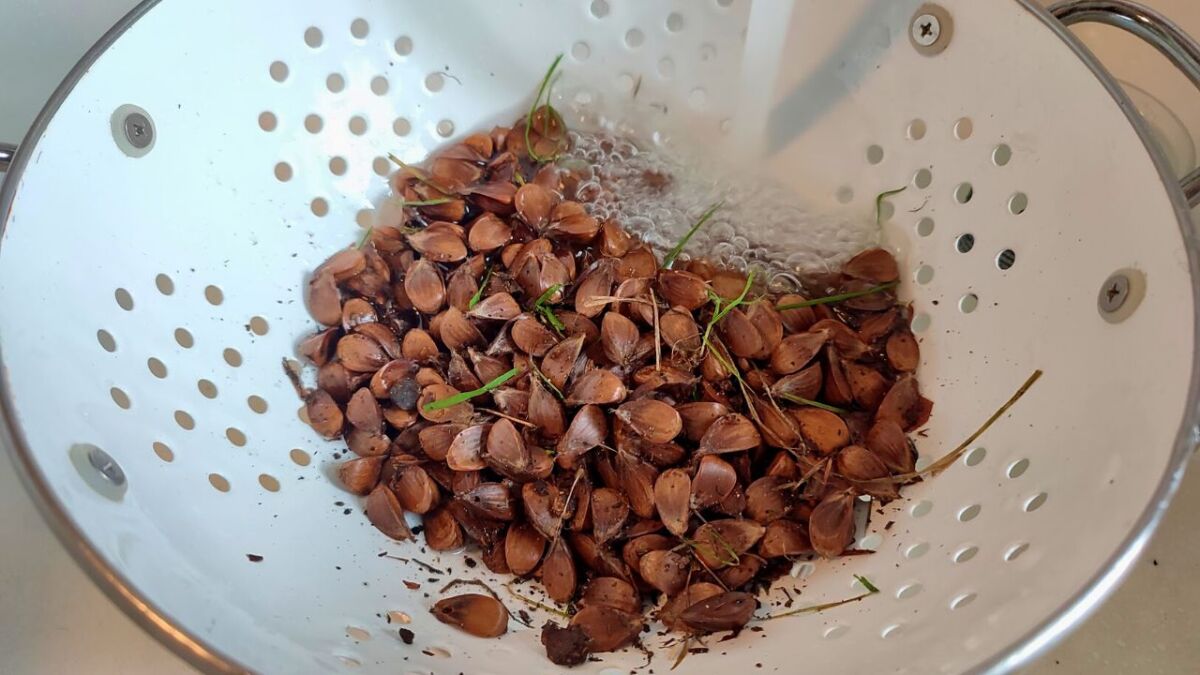
Then I start cracking the husks. You don't have to throw away the husks, you can give them to the children for crafting. Experience shows that the creative minds of children know exactly what can be created from them.
After all, it's autumn and there are some rainy or foggy days ahead, where the weather invites you to gather for a hot cocoa and crafting afternoon.
If you have an oven but no children, the dried shells of the beech nuts are also suitable for use as tinder to get the fire going.
Sustainability can be practiced individually at home as well. But let's get back to the nuts.
Beech nuts are not huge, which presents you with a small challenge.
Because to work effectively with them, you need to have collected quite a lot.
But since freeing the nuts from their shells is about as easy as cracking pumpkin or sunflower seeds, you can ask your children for their support with a larger quantity. I assure you, they will have fun eating the exposed beech nuts.
And this is how you get to the beech nuts:
- You can easily crack the thin brown capsule around the seeds using your fingernails or a wooden hammer.
- Remove the thin brown capsule to access the seeds.
- Then roast the beech nuts in a pan without oil or dry them in the oven.
- Remove the fine brown skin.
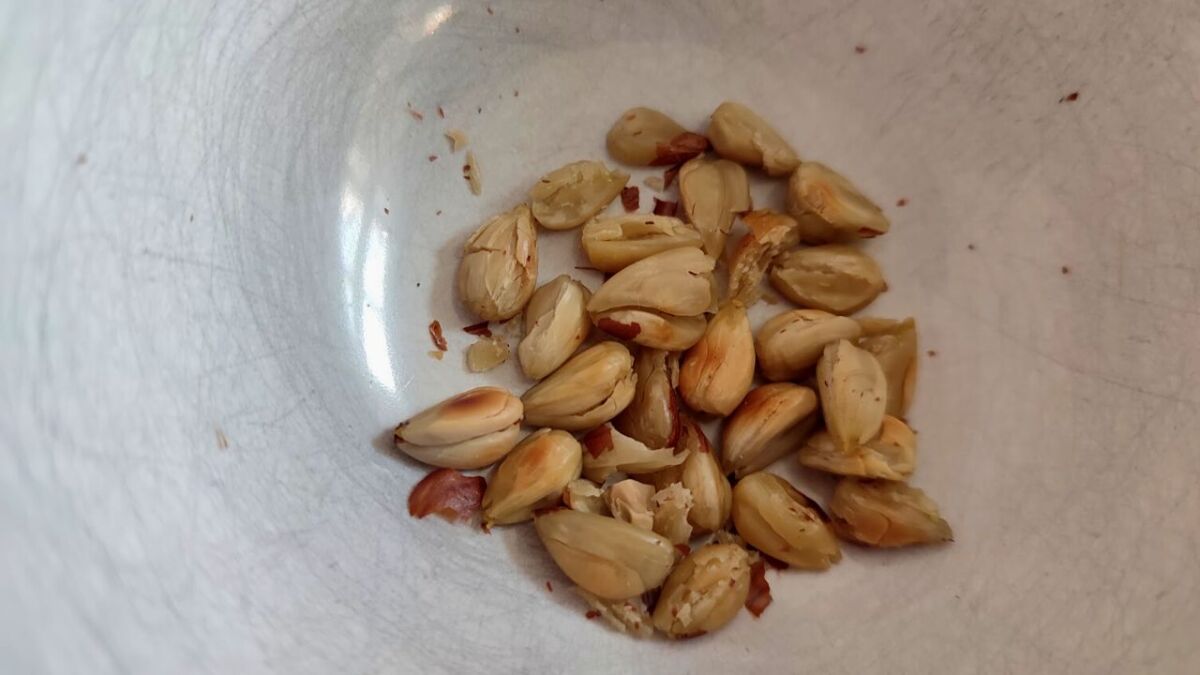
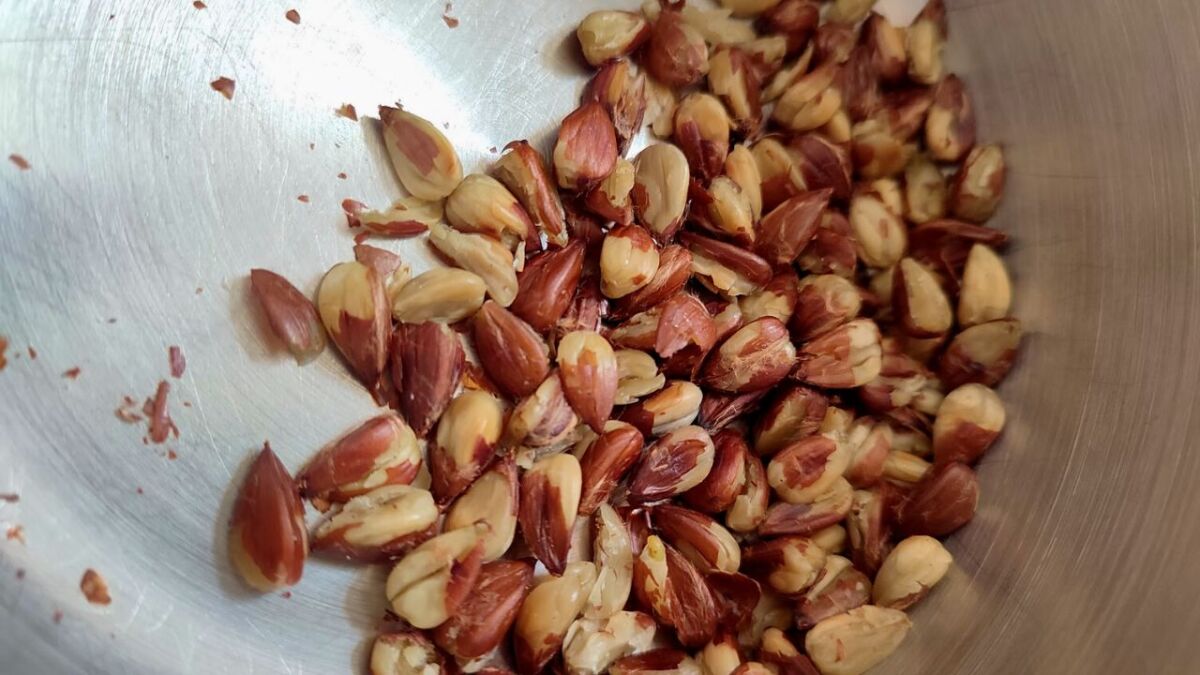
If you have an oil press, you can press oil from a sufficient amount of beech nuts, which can be used for some healthy dishes in the kitchen.
Roasted beech nuts are durable for some time and can be used for everything where nuts are typically used. You can use them to create muesli, cakes, breads, or small snacks such as homemade trail mix.
If you dry them, you can either crush them with a mortar, or process them into a rich flour in a conventional coffee grinder.
It admittedly takes some time, but it's worth it. Beech nuts contain so many valuable nutrients that you definitely don't want to miss out on.
Can beech nuts be eaten raw?
Beech nuts contain alkaloids, oxalic acid, cyanide and fagine and are therefore slightly poisonous in their raw state. Eating raw beech nuts can cause stomach and headache up to vomiting or cramps. Pregnant women and children, in particular, should enjoy raw beech nuts with caution.
However, there are no specific indications of how many beech nuts can cause symptoms and can be eaten safely. I have already eaten some raw nuts myself and could not detect any changes. Healthy adults can tolerate a handful of nuts raw. All toxins can be broken down by heating.
What makes beech nuts so special?
In addition to trace elements such as copper, manganese, iron and zinc, beech nuts also contain numerous vitamins and minerals.
Like all nuts, they have a high fat content and thus contribute to a balanced diet with healthy fats.
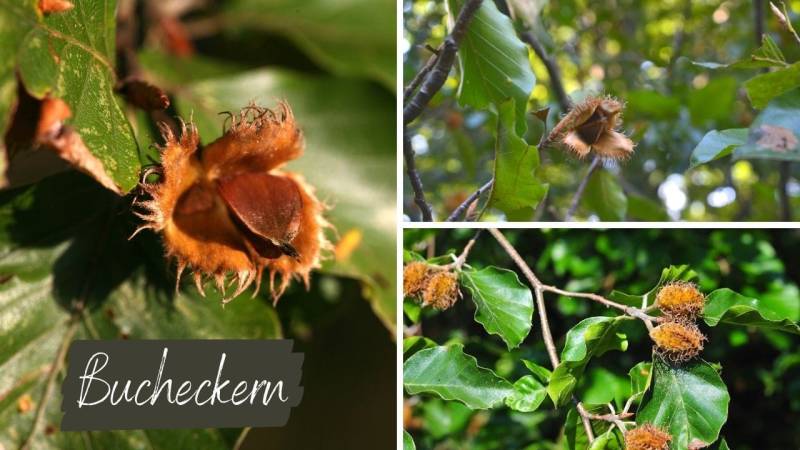
In addition to various amino acids and fatty acids, they have some properties that make them fitness and superfoods.
Since there are really very many ingredients, please forgive me that it is impossible to list all of them, as this would otherwise exceed the scope.
Moreover, accurate quantity information can only be provided if you know from which region and under what ecological conditions the beech nuts were collected. Because this can be very variable.
| In general, the rule of thumb is that 100 grams of beech nuts contains: | In comparison, an apple with its nutritional values contains: |
|
|
| The vitamin content of beech nuts in 100 grams is: | In comparison, an apple contains: |
|
|
You can easily add the obtained flour from the beech nuts to your regular wheat or rye flour by up to 50 percent, thereby increasing the content of healthy ingredients in your bread or even cake.
Already in the Middle Ages, farmers stretched their flour supplies in this way and made them more digestible at the same time.
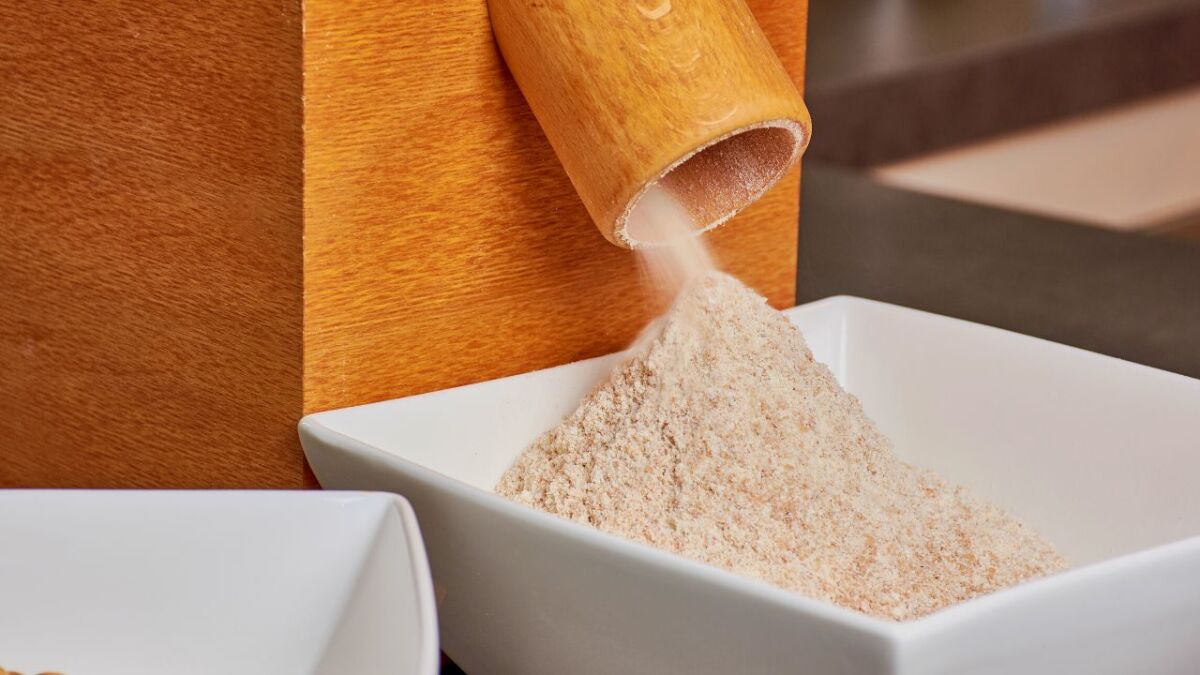
There is no reason why you shouldn't benefit from this ancient knowledge, apart from the time required.
Especially in today's world, it is important to know what is in our food, and pure wheat flour has lost its good reputation for good reason.
Beech nuts are therefore an excellent alternative method for healthier eating. They, too, have a certain reputation, as they contain low levels of oxalic acid.
Although small amounts are safe for healthy individuals, those who want to be certain can disarm this property by roasting them.
The seeds of the beech tree are also used in a variety of recipes, and I would like to recommend a few of them to you in the following section.
Pesto with a twist
As we all know, traditional pesto is made with basil and pine nuts.
But pesto is not just pesto. Even without importing ingredients, it is possible to make a pesto from local wild herbs such as wild garlic, garlic mustard, or watercress and beech nuts.
To achieve this, you need about 150 grams of roasted beech nuts, which you can also combine with walnuts, and the corresponding amount of wild herbs.
Since both types of nuts are very fatty, you can even do without additional oils.
Thanks to the spicy heat of wild garlic, garlic mustard, watercress and co, you only require a little salt to mix the above ingredients into a bold and aromatic pesto.
The pesto not only goes well with pasta, but also offers a tasty experience with potatoes or rice.
Beech nuts in bread, cake, or muesli
Beech nuts have a distinctive nutty flavor, which can add an extra something to breads or cakes.
However, they do not contain gluten, which is found in wheat flour, for example. Therefore, when using beech nut flour, a binding agent must be added to make the dough stick together. Mixing in a different gluten-containing flour or an egg can help with this.
Once all the ingredients are mixed, there is nothing stopping you from baking.
Beech nuts can also be a healthy addition to your morning muesli. Along with sunflower or pumpkin seeds, you can mix in beech nut seeds with your oats. They taste even better when roasted.
You can also use whole beech nuts in wholemeal bread.
Baking sweet beech nut bread
Ingredients:
- 500g Beech nuts
- 500g Flour
- 250g Sugar
- 1.5 tsp Baking powder
- 1/2 liter Milk
- 8 tbsp Bread crumbs
- 1 tbsp Butter
Instructions:
- Peel beech nuts and roast them in a pan without oil, then grind into flour.
- Mix the flours, sugar, and baking powder.
- Grease a baking tin and sprinkle with bread crumbs.
- Add milk to the dry ingredients and mix.
- Bake at 190 °C for 45–55 minutes.
Tips:
- If the dough feels too firm, add a little more milk afterward. The dough should feel like firm yeast dough.
- At the end of the baking time, brush the bread with melted butter and sprinkle with sugar.
Beech nuts as a coffee substitute
In times of crisis, people get inventive, and you have probably heard of coffee made from acorns. With beech nuts, you can brew coffee just the same.
You can roast them nice and dark and grind them into powder, which serves as a coffee substitute.
The advantage of beech nuts is that they don't need to be rinsed for ages before roasting, as is the case with acorns. Unlike acorns, beech nuts do not contain tannins.
However, the taste is not everyone's cup of tea. A pinch of cocoa, cinnamon or roasted chicory root can help.
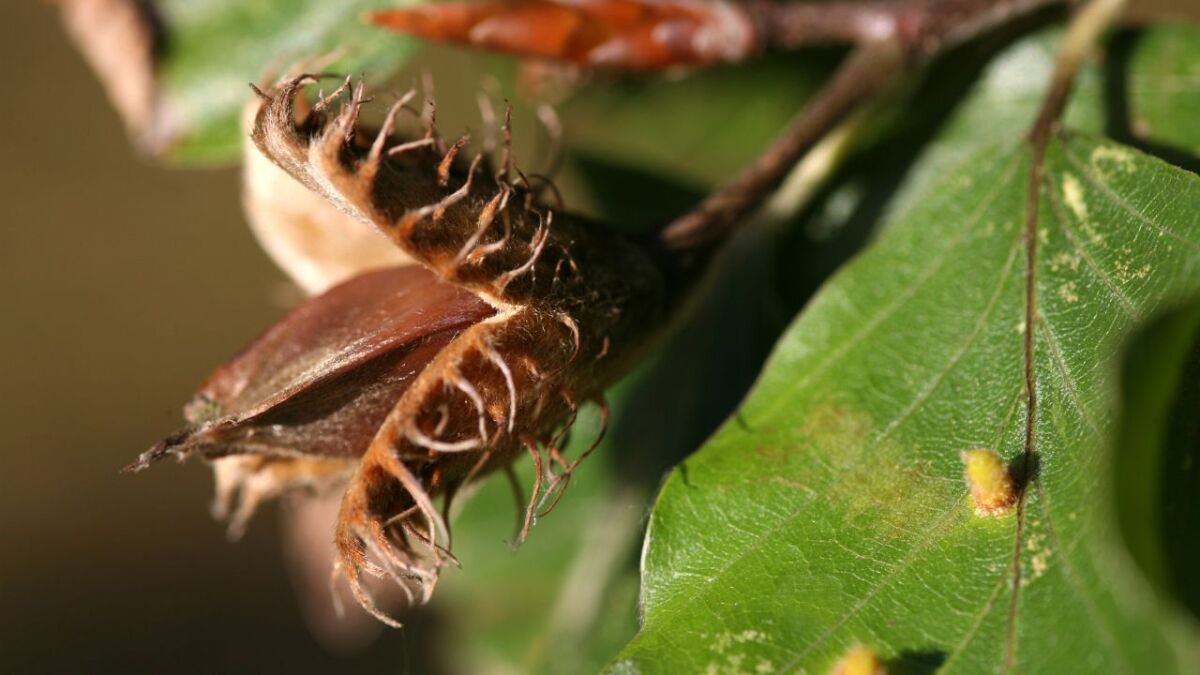
Recipe for Beech Nut Butter
When I looked at the ingredient list on a jar of peanut butter that I sometimes treat myself to, it said: "Peanuts (97%), Palm Oil (3%), Salt".
I wondered how hard it really is to have my beech nut butter.
In essence, the process goes something like this:
- Peel the beech nuts
- Briefly fry them (or 10 minutes in a hot oven)
- Rub the skin off
- In a mixer with a steel blade, process for several minutes until a paste is formed
- Add a small amount of oil if it is too dry – i.e., not spreadable
- Add sugar/honey and salt to taste
- If you like it crunchy, add a few whole beech nuts at the end
Then fill the mixture into jars and store in the refrigerator to avoid oil separation or rancidity problems.
Here is a video I made for you:
To roast beech nuts, spread them out in a single layer on a baking sheet and place them in the oven at 350 °F (ca. 177 °C) for about 10–15 minutes, or until they turn golden. Remove from the oven and allow them to cool before shelling and eating.
Can you extract oil from beech nuts?
Yes, beech nuts contain oil that can be extracted. In the 18th century, it was believed that the state debts could be paid off by extracting the oil from beech nuts. Beech nut oil was considered a valuable commodity and was used for lighting as well as cooking.
Beech Nuts and Animals
This subject is controversial, as there are no real studies on the matter. While beech nuts are good for wild animals, they can have fatal effects on pets.
Horses and guinea pigs, for example, cannot tolerate beech nuts at all. Rabbits should also be approached with caution. Since there is no reliable information available for dogs or cats, it's best to err on the side of caution.
Unfortunately, everything has two sides, and just because something is good for us doesn't mean it won't pose a threat to our pets and livestock.
In particular, horses can suffer severe damage and even die from consuming more than 1000 grams of beech nuts.
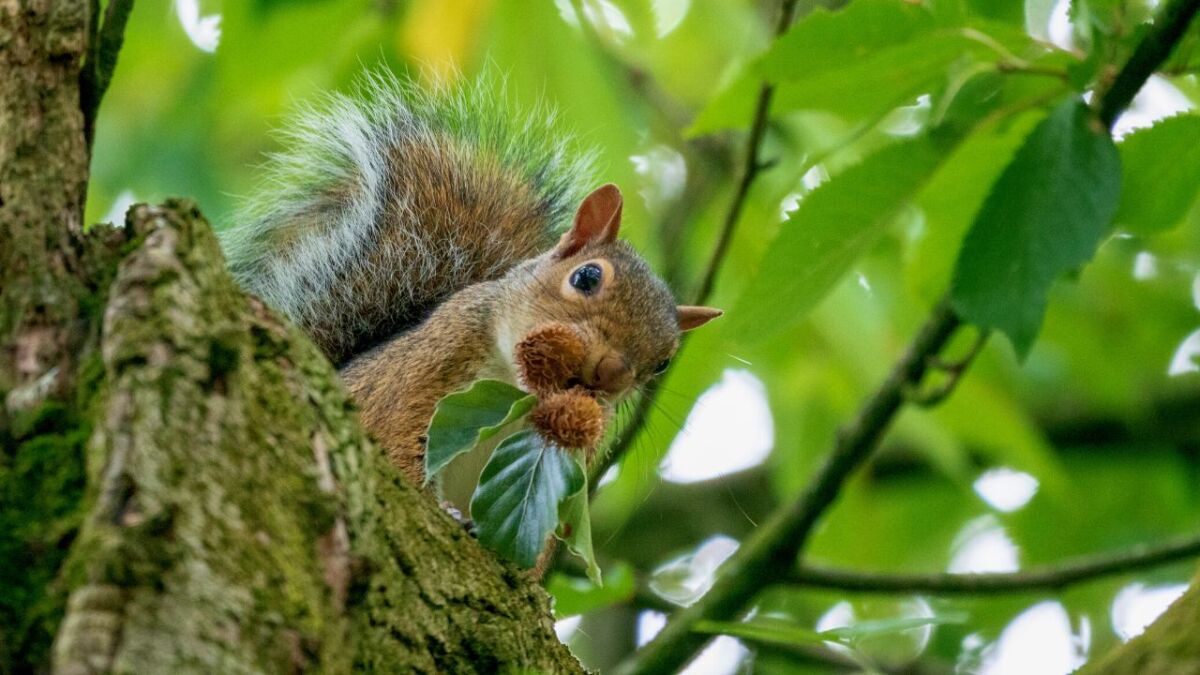
Questions and Answers about Emergency Food
What do beech nuts taste like?
The fruit of the beech tree, known as the beech nut, is found in small seed capsules that fall from the tree in autumn. They are small, triangular, and edible, with a slight bitter to mild, nutty flavor.
How do I roast beech nuts?
Heat a pan on low heat and melt 1 tbsp. of butter. Once the butter has melted, add the peeled nuts. Then bake for 3–5 minutes until golden brown. If you want to avoid using butter, skip it.
Can beech nuts be eaten raw?
Eating a few raw beech nuts is fine, but more than a handful should be cooked or roasted before consumption. Raw beech nuts contain saponins, which can cause stomach problems if you eat many raw beech nuts.
Do beech trees produce beech nuts every year?
Similar to oak species, the availability of beech nuts varies considerably and undergoes a natural cycle referred to as "mast years". In this cycle, record harvests of beech nuts typically occur every three to six years in the south, while the interval is only two to four years in the north.
What animals eat beech nuts?
Nuts produced by beech (the beech nuts) are an important food source for wildlife and are rich in fats and proteins. Wild turkeys, wild pigs, deer, elk, squirrels, and other animals eat beech nuts.
How do I identify a beech tree?
Beech leaves are shiny and dark ovate with a pointed tip. Look also for straight, parallel veins running from the waist to the serrated edges of the blade. Beeches have a distinctive smooth silvery-gray bark, which makes them easily identifiable as beeches in winter.
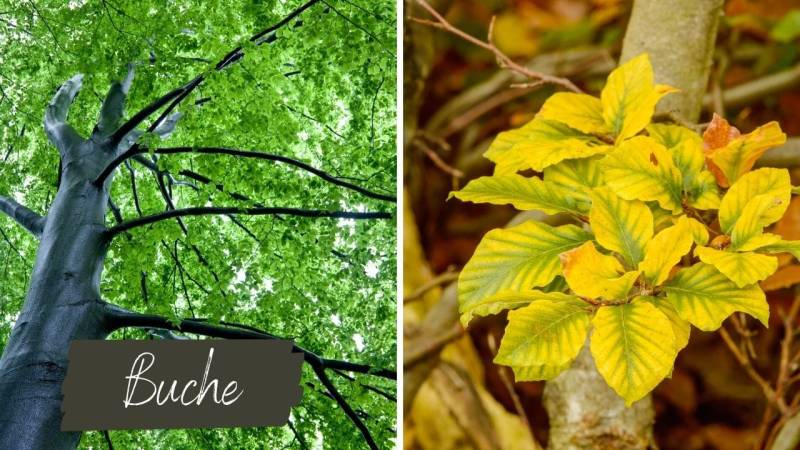
Conclusion: Beech nuts are perfect for serving as food in emergencies
Beech nuts are wonderful as emergency food in winter. The few things that need to be kept in mind do not detract from the effectiveness of using them in this way.
On the contrary, we learn something new when we approach everything with mindfulness. Life is ultimately a process of learning and experimentation. The knowledge gained from this can only be beneficial for us and our loved ones.
In addition, the "food" as we know it today leaves little room for this learning process, as it rarely allows us to discover anything new.
Furthermore, many additives are highly questionable today. We are also living in a time where it is no longer a given that we can simply go to the nearest supermarket.
The gas and power shortages, whether artificially induced or not, bring with them additional problems that we should be aware of.
Without power, practically nothing works anymore. Logistics, transportation, storage - all are connected to a functioning power grid. We have to be aware of this.
And in the event of stockpiling, we can no longer rely 100% on a flawlessly functioning infrastructure.
This, in turn, should prompt us to rethink our approach. Nature provides us with a bounteous table. We would be foolish not to take advantage of it.
Beech nuts were used in the past and can help us today to survive emergencies and crises.


Author of the guide
Martin Gebhardt
Hey, I'm Martin. On my blog, you will learn the basics and numerous details about living in the wild. I think survival, bushcraft and the good life in nature are the keys to happiness. Find me here on Instagram or on YouTube. You can find more about my mission on the About Me page.
Was this guide helpful?
37 people found this guide helpful.
5.00 out of 5 points (37 Ratings)
Comments (0)
This post may contain affiliate links. So if you click on the links and make a purchase, I will receive a small commission at no additional cost to you. Click here, to learn more about it.



